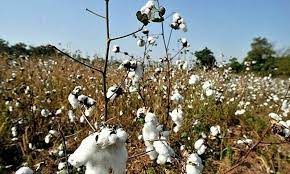Domestic cotton production in Pakistan declines to four decade low of 4.9 m bales
Islamabad [Pakistan], April 6 (ANI): The domestic cotton production in Pakistan in 2023 has declined to a four decade low of 4.9 million bales. This has added to the country’s deepening economic crisis, Pakistan based Dawn newspaper reported.

As per Dawn, ginning data shows that the cotton harvest declined by a hefty 34 per cent this year from 7.44 million bales the previous year, mainly because of the catastrophic summer floods in Sindh and southern Punjab where this industrial crop is mostly grown. Pakistan’s Sindh has suffered a 46 per cent loss in cotton output, with Punjab posting a 32 per cent decline, forcing the textile industry to import significantly large quantities.
Though most of the crop losses this season were caused by the floods, Pakistan’s cotton economy has been facing numerous challenges due to consistently falling production over the last couple of decades, after touching a high of 11.1 million bales in 2004-05, according to Dawn.
The most recent production spike of 10.6 m bales was seen almost ten years ago in 2014. Meanwhile, in comparison, global production elsewhere in the world, especially in India, has been increasing rapidly to record levels.
According to Dawn, there are several factors responsible for the poor cotton harvest, year after year, ranging from pests and disease, erratic weather patterns and water shortages to poor seed quality, lower per acre yield and a large reduction in the area under cultivation because of government policies encouraging sugarcane and other major crops in traditional cotton-sowing regions.
Textile and clothing exports have suffered a great deal in the last one decade, with average annual production dropping to almost half the actual requirement of the textile industry. Additionally, cotton imports, a major driver of the economy, are adding to our balance-of-payments woes.
During the first eight months of the present fiscal year, textile exports.
Textile exports during the first eight months of the present fiscal year plunged by almost a third because of slowing global demand as well as shortages of the local fibre. With the industry having invested billions of dollars in technology replacement by spinners, its future competitiveness depends largely on the increased availability of domestic cotton, Dawn reported.






